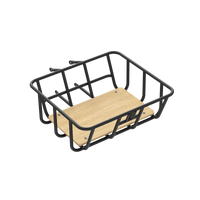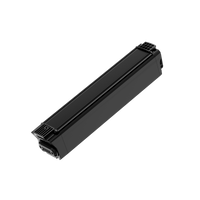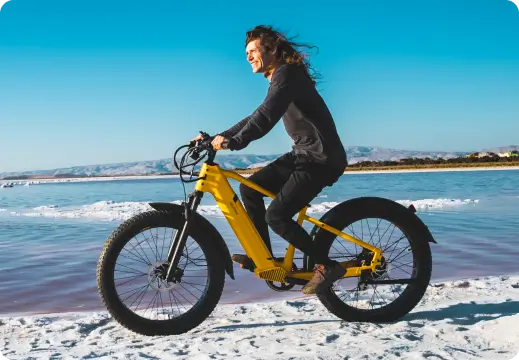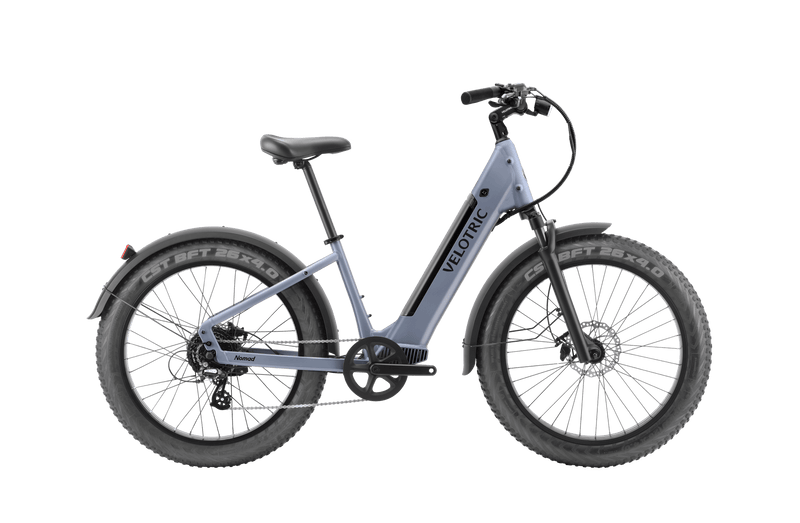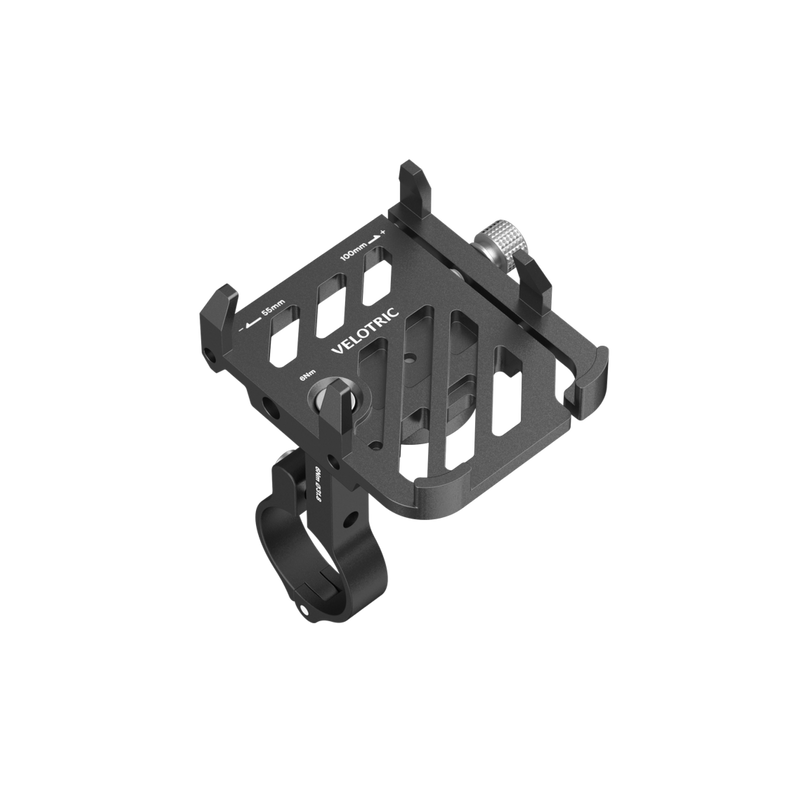When winter weather strikes and temperatures plummet, electronic bike riders have two options: prepare for the elements or hibernate (aka store their bike) and wait for spring. We can’t knock either choice, but we can help cold-weather riders get their e-bikes ready for winter conditions. After all, it might be chilly, but it’s always fun romping through slush and snow.
Let’s dig into a few winter tips to keep you safe and your electric bike working its best.
What temperatures can my e-bike handle?
Have you noticed your phone battery declines faster in the cold? Most batteries don’t function at full capacity in freezing temperatures, but some e-bikes might handle arctic weather better than you think.
Velotric batteries provide full range in temperatures as cold as 14°F (-10°C). The lowest temperature your Velotric battery can handle is -4°F (-20°C). If you find yourself in conditions that frigid, you can still pedal your Velotric like a normal bike as you navigate to a warmer place. Before temperatures reach the max low, Velotric e-bikes maintain 75% of range when the weather falls below 14°F.

For more information on winter battery maintenance and how to put your e-bike into storage, check out some helpful tips here.
How to stay safe on e-bikes during winter weather
Control the road. It’s easier said than done during tough weather conditions. But that doesn’t mean it’s impossible. It’s important to give yourself extra time to brake and take turns in snow or ice. As you first learn or rediscover how to ride in winter elements, taking it slower than normal on stops and turns can go a long way to staying safe and upright on your e-bike.
We recommend starting winter rides without pedal assist — and without throttle assist — until you feel comfortable with your speed and control in the conditions.
Should I use winter tires for my e-bike?
Just like a car, winter tires can make all the difference for electronic bikes to maintain control over snow and ice.
That’s why electric fat tire bikes and studded tires are a common choice for riders in cold climates. Fat tires provide additional control — especially in fresh snow — due to increased tire width. Studded tires are best for breaking through packed snow and ice to improve traction.
As a powerful electric fat tire bike, the Velotric Nomad 1 comes ready to handle rugged adventures and polar conditions across all terrains. The Nomad 1 is equipped with IPX6 grade waterproof and hydraulic disc brakes to dominate cold and wet conditions.
The Velotric Discover 1, a quality commuter bike, comes standard with IPX6 grade waterproof and hydraulic disc brakes, but Discover 1 owners might want to consider swapping to studded tires if they plan to ride during an icy winter. The stock tires are designed for efficiency under normal commuter conditions.
What PSI tire pressure should I use in the winter?
We recommend keeping tire pressure slightly lower than indicated during inclement weather. Lower PSI creates additional contact points between the road and tire, allowing for better traction.
For example, the standard tire pressure on a Velotric Nomad 1, which comes equipped with fat tires, is 30 PSI. Dropping the PSI 10% to 20% can help provide better traction in snow and ice.

E-Bike Winter Maintenance Tip: Well-Lubricated Parts
Before a winter ride, it’s always a good idea to make sure your drivetrain is lubed up and looking good. With slush, salt and dirty roads threatening your bike even more during cold weather, it’s crucial to care for your e-bike and parts after winter rides. Not only will a lubricant protect bike parts from constant friction and keep a bike’s lifespan optimal, but lubricants also help shut the door on potential rust and corrosion caused by salt later down the road.
The most important parts to check for lubrication include the chain, cassette and connecting parts like pedals and brake levers. When you lube up your chain and cassette, make sure you apply to the inside of the chain links to help get lube in the right place. It’s important not to over-lubricate your chain. This is also a good time to make sure your chain is working properly without a hitch.
E-Bike Best Practices Before A Winter Ride
Phone, keys, wallet…. hat, gloves, scarf. Don’t leave home without them, folks — especially on a brisk bike ride. Staying warm and comfortable is key for any type of winter e-bike ride.
After you’ve checked your chain, cables and tire pressure, we recommend making sure the handlebar is perpendicular to the front wheel and the saddle is parallel to the ground. Lift the bike up and down and rotate the handlebars to see if all the parts and suspension work properly, brakes included. Adjust the saddle height to your preference through the quick release clamp. Check your battery. Velotric Country, let’s ride!
E-Bike Best Practices After a Winter Ride
Ah, salt. Delicious on french fries but malicious to bikes and automobiles.
If you ride in a region that uses salt to keep roads from icing up, caring for your e-bike is even more important. Why? Salt causes headaches by accelerating the corrosion and rusting process. When cables start to corrode, your brake or shifter will not work as smoothly.
A lot of major cities use salt to keep roads safe. In 2006, New York City reportedly used 200,000 tons of salt to combat a single February blizzard that dropped 27 inches of snow. Meanwhile, Chicago recently used as much as 320,000 tons of salt to get through its frigid 2020 winter.
That’s a lot of salt that your e-bike meets and rides over. So after a winter ride, the easiest way to keep your e-bike in terrific shape is by keeping it clean. We recommend using a sponge or cloth with a warm bucket of water to keep your electric bike clean after a salty, slushy ride. You don’t necessarily need to drench your bike, but you can add a little bit of dish soap to help cut through the grease and salt. Cleaning your e-bike for just a few minutes after a cold-weather jaunt can do wonders to keep it mint for many winters to come.
Don't have an e-bike yet?
Check out the Nomad 1 for winter rides or get a Discover 1 for when e-bike hibernation ends and you’re ready to pedal into spring.























